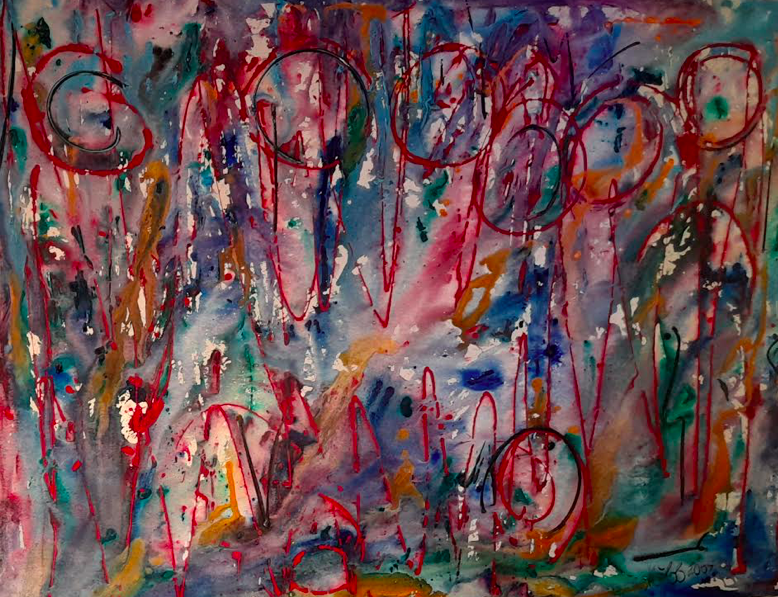Francisco Córdoba is an artist who moves between worlds. Born in San José, Costa Rica, in 1958, his path has taken him across continents, cultures, and disciplines. From his early education in Iowa to the University of Costa Rica in the late 1970s, he has always been drawn to the transformative power of art. In 1979, he left for Europe, settling in Italy a year later. His first solo show was in Rome in 1986. Since then, he has exhibited in around 100 solo shows and more than 250 group exhibitions, along with poetic and music performances, plus action paintings.

Córdoba’s work is difficult to categorize. He moves freely between painting, sculpture, and ceramics, always chasing ideas rather than fitting into a genre. His research is rooted in emotion—feelings, needs, expectations, and desires. But there is also an urgency to his work. He is not just expressing himself; he is trying to shape a more humane world through art.
His list of exhibitions is extensive. He has been part of three Venice Biennales, a landmark for any artist. His work has been shown at the Albert Einstein Museum in Germany, the National Modern and Contemporary Gallery in Rome, and the Paestum UNESCO archaeological site. Each exhibition adds another layer to his exploration of humanity and its fragile relationship with the world.
One of his defining pieces is “Nature and Dreams,” a mixed-media painting created in 2009. Measuring 150×200 cm, it was part of a major installation project for the Venice Biennale that year. The painting focuses on nature’s fragility, using delicate floral elements as a metaphor for its vulnerability. But this is not just a statement piece; it is immersed in a dreamlike world. The work does not dictate a single message—instead, it invites the viewer to feel, reflect, and question their relationship with nature.
Córdoba’s approach to art is fluid, almost restless. He does not settle into a single technique or theme. His work spans traditional and experimental methods, from large-scale paintings to intricate sculptures. Action painting, a spontaneous and physical style that emerged in the mid-20th century, plays a role in his process. It allows him to bring raw emotion onto the canvas without overthinking.
Beyond the physical artwork, Córdoba has engaged in performance-based art. Poetry, music, and live painting sessions are part of his creative arsenal. These elements reinforce his belief that art is not just about the final product; it is about the experience, the process, and the impact it leaves on others.
Looking at Córdoba’s career, there is a sense of movement, a refusal to stay still. He has spent decades navigating different cultures and artistic disciplines, but his core remains the same—a deep concern for humanity, a desire to communicate, and an unshakable belief in the power of art to make a difference.
His work is not always easy to interpret, and that is intentional. He does not spoon-feed meaning. Instead, he creates spaces where people can engage with the work in their own way. Whether through the abstract layers of “Nature and Dreams” or the energy of his action paintings, Córdoba invites the viewer into a world where emotions take precedence over logic.
For those unfamiliar with his work, stepping into Córdoba’s universe can feel like entering a storm. Colors clash, textures fight for attention, and meanings shift. But beneath the chaos, there is a structure, a rhythm. His art is not about randomness but about capturing something raw and real.
At a time when the world feels increasingly disconnected, Córdoba continues to create art that bridges gaps. His work is about understanding, feeling, and questioning. He has spent a lifetime exploring these themes, and his journey is far from over.

